Silversmith Audio Fidelium Speaker Cable by Mike Wright
 I was getting caught up with my good friend Daniel Barnum, ex-owner of the distribution company Half Note Audio when he shared some exciting news with me. He told me that our cable buddy, Jeffrey Smith of Silversmith Audio (herein Mr. Smith), wanted to talk to me about something new that he had been designing. When I asked him what it was, he said Mr. Smith had come up with a speaker cable that outperformed Silversmith’s top-of-the-line Palladium and is a fraction of the cost. All the while, I am saying to myself, “Yeah right.”
I was getting caught up with my good friend Daniel Barnum, ex-owner of the distribution company Half Note Audio when he shared some exciting news with me. He told me that our cable buddy, Jeffrey Smith of Silversmith Audio (herein Mr. Smith), wanted to talk to me about something new that he had been designing. When I asked him what it was, he said Mr. Smith had come up with a speaker cable that outperformed Silversmith’s top-of-the-line Palladium and is a fraction of the cost. All the while, I am saying to myself, “Yeah right.”
When I first got into reviewing, Silversmith Audio was one of the very first high-end cable manufacturers that came into my realm of consciousness, and the Palladium was something of a legend. I’d always heard of it but had never experienced it. A former ST writer let me check out his Palladium cables for a few weeks and was stunned by just how good they sounded. When I found out how much they cost, I was shocked again. I knew there was no way I’d be buying any of this stuff. It’s just way too expensive for my modest funds. Even when I met Smith, I felt the same way. Don’t get me wrong. Mr. Smith is a great guy. He’s a Navy man, engineer, and astute businessman. He’s also a fabulous audio designer and even built some of his audio gear for his system, which I’m told sounds exceptional. And when you talk to him about audio, he is even more impressive and knowledgeable. Mr. Smith knows his stuff and to a very high degree.
When Daniel Barnum told me that Mr. Smith wanted to talk to me about a new speaker cable, I didn’t think much of it. I was determined not to fall into some audio hype. The Silversmith Audio offerings were usually so expensive; no matter what “a fraction of the cost” was, it was still going too expensive for me. Thank God for Mr. Smith’s persistence. A few weeks later, he called me. After exchanging pleasantries and getting caught up, we started to talk shop, and he bought up the subject of his new Fidelium speaker cables.
Mr. Smith shared with me the same things that Daniel Barnum shared a month earlier but in more detail. I told Mr. Smith that I understood what he was saying but that I just figured he was exaggerating. I reminded him not only had I spent time with the Palladiums that from years ago, but that he had also sent Silver and Palladium speaker cables to listen to way back when. All Mr. Smith would say was, “Trust me, you won’t be disappointed.”
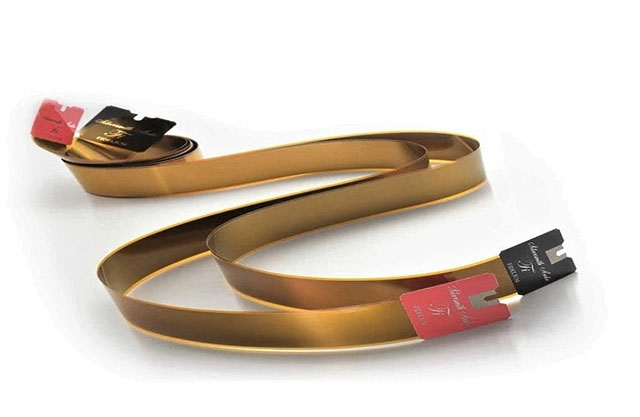
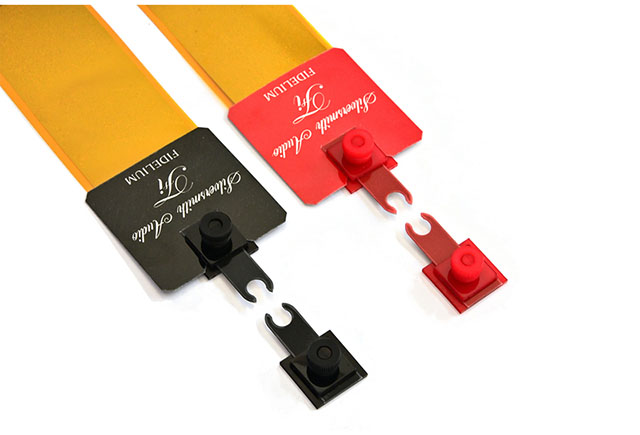
 A short time later, the Fidelium showed up at my home. Even this was a little surprising because they arrived in a box. Not just any package, mind you, but a box that you could fit a Seiko watch inside. Maybe a little taller. Once I opened this lightweight box, the Fidelium speaker cables were wrapped in a nice circle inside a watch-sized box. Now I am thinking, “What the heck?” Maybe Mr. Smith had hit upon hard times. What is this supposed to be? If you have ever used a flat ribbon cable, Mr. Smith’s speaker cables are flat, extremely light, but at the same time quite tough. Even though they do not have a lot of heft, you can tighten connectors on them tight. The Fidelium speaker cables are about 2.25 inches wide and less than 1/1000th of an inch thick. The cable sits inside of a very thin “polyimide laminate” outer covering. There are notches on each end of the cable designed like spade connectors, and there is a single run for negative and positive sides of your speaker cable and amplifier terminals. I had the Fidelium for about five days but was hesitant to insert them into my system because I did not want to “man-handle” them to get the notches to fit on the speaker and amplifier terminals. The Silversmith Audio Silver and Palladium speaker cables had these “not very wide” ribbons seated inside an attractive gold mesh jacket, whereas the Fidelium does not have a jacket. Humorously, Mr. Smith encouraged me not to be shy about taking hold of the Fidelium and folding or bending it in whichever position I needed to get it on my connectors securely. Just take care that the foil areas do not touch, same as you would to make sure your positive and negative speaker connectors do not touch. With that encouragement in mind, I had no difficulty putting the notched ends of the cables and torque them down on the speaker and amplifier connectors.
A short time later, the Fidelium showed up at my home. Even this was a little surprising because they arrived in a box. Not just any package, mind you, but a box that you could fit a Seiko watch inside. Maybe a little taller. Once I opened this lightweight box, the Fidelium speaker cables were wrapped in a nice circle inside a watch-sized box. Now I am thinking, “What the heck?” Maybe Mr. Smith had hit upon hard times. What is this supposed to be? If you have ever used a flat ribbon cable, Mr. Smith’s speaker cables are flat, extremely light, but at the same time quite tough. Even though they do not have a lot of heft, you can tighten connectors on them tight. The Fidelium speaker cables are about 2.25 inches wide and less than 1/1000th of an inch thick. The cable sits inside of a very thin “polyimide laminate” outer covering. There are notches on each end of the cable designed like spade connectors, and there is a single run for negative and positive sides of your speaker cable and amplifier terminals. I had the Fidelium for about five days but was hesitant to insert them into my system because I did not want to “man-handle” them to get the notches to fit on the speaker and amplifier terminals. The Silversmith Audio Silver and Palladium speaker cables had these “not very wide” ribbons seated inside an attractive gold mesh jacket, whereas the Fidelium does not have a jacket. Humorously, Mr. Smith encouraged me not to be shy about taking hold of the Fidelium and folding or bending it in whichever position I needed to get it on my connectors securely. Just take care that the foil areas do not touch, same as you would to make sure your positive and negative speaker connectors do not touch. With that encouragement in mind, I had no difficulty putting the notched ends of the cables and torque them down on the speaker and amplifier connectors.
How It Sounds
 After finally getting the Fidelium hooked up in my system, I started listening with some encouragement from Mr. Smith. Right from the start, what was most apparent was how fast the Fidelium cable sounded. There was so much more detail, openness, and musical information that it was almost an assault on the senses, but in a very audibly pleasing way. The Fidelium produced tonal colors that were vibrant and energetic. With the Fidelium, instrumentals and vocals were delivered with a considerable amount of presence, realism, and believability. Upper frequencies were provided with an increased amount of airiness and clarity. Percussion kits possessed newly discovered bits of information, and sounds, previously hard to identify, were now easier to follow. There are still items on percussion kits that I have no idea of what they are called, but with the Fidelium I can easily tell what they sound like. Also, brass instruments sounded clearer and pierced the air just as they do at live venues. With the increases in clarity and transient detail came the ability to make following individual lines from singers and instrumentalists easier to follow if you like to pinpoint what a particular performer is doing. But all the speed, detail, and musical discovery came at a cost. Initially, the Fidelium’s bass performance, while not bad, was not quite what I was used to or even expecting initially. Still, the Fidelium was so revealing of the music that I was willing to sacrifice some bass performance for what I was getting in the midrange and the highs.
After finally getting the Fidelium hooked up in my system, I started listening with some encouragement from Mr. Smith. Right from the start, what was most apparent was how fast the Fidelium cable sounded. There was so much more detail, openness, and musical information that it was almost an assault on the senses, but in a very audibly pleasing way. The Fidelium produced tonal colors that were vibrant and energetic. With the Fidelium, instrumentals and vocals were delivered with a considerable amount of presence, realism, and believability. Upper frequencies were provided with an increased amount of airiness and clarity. Percussion kits possessed newly discovered bits of information, and sounds, previously hard to identify, were now easier to follow. There are still items on percussion kits that I have no idea of what they are called, but with the Fidelium I can easily tell what they sound like. Also, brass instruments sounded clearer and pierced the air just as they do at live venues. With the increases in clarity and transient detail came the ability to make following individual lines from singers and instrumentalists easier to follow if you like to pinpoint what a particular performer is doing. But all the speed, detail, and musical discovery came at a cost. Initially, the Fidelium’s bass performance, while not bad, was not quite what I was used to or even expecting initially. Still, the Fidelium was so revealing of the music that I was willing to sacrifice some bass performance for what I was getting in the midrange and the highs.
Eventually, my persistence began to pay off. After 3-5 more days, the Fidelium started to loosen its grip on the bass and rewarded me by extending the attributes it displayed with the midrange and highs down to the deepest bass. By the end of one month, I did not feel like I was being cheated out of any bass. With the Fidelium, the bass is detailed, full sounding, extended but still tight. Do not get me wrong. If your system lacks bass, the Fidelium will not change your speakers into bass mavens. Still, at the same time, if your system has bloated bass, and that being an artifact of your speaker cables, the Fidelium can tighten that up and cause it to sound more natural. On the other end of the spectrum, the Fidelium allows instruments like bells, triangles, and xylophones to sound so vibrant and have such natural decay that their notes linger in your listening environment.
 From the beautiful Kenny Werner Trio recording, “Live at Visiones” [Concord Jazz], you get to enjoy a live jazz recording, complete with the venue ambiance, people talking, and, judging by their applause, seemingly having a good time. On this performance, pianist Kenny Warner, bassist Ratzo B. Harris, and drummer Tom Rainey give us some beautiful music, such as on tracks like Wayne Shorter’s Fall, and the Miles Davis standard Blue In Green, and Mal Waldron’s Soul Eyes. All recorded with the mics up close. Mr. Harris’ bass, in particular, stands out on the track, Fall, and you get to hear what a live bass, microphoned up close, would sound like in your room. The Fidelium was adept at letting you hear the bass chords energetically, filling the room, and extending down to the low notes. It also did an excellent job of detail retrieval with the room sounds.
From the beautiful Kenny Werner Trio recording, “Live at Visiones” [Concord Jazz], you get to enjoy a live jazz recording, complete with the venue ambiance, people talking, and, judging by their applause, seemingly having a good time. On this performance, pianist Kenny Warner, bassist Ratzo B. Harris, and drummer Tom Rainey give us some beautiful music, such as on tracks like Wayne Shorter’s Fall, and the Miles Davis standard Blue In Green, and Mal Waldron’s Soul Eyes. All recorded with the mics up close. Mr. Harris’ bass, in particular, stands out on the track, Fall, and you get to hear what a live bass, microphoned up close, would sound like in your room. The Fidelium was adept at letting you hear the bass chords energetically, filling the room, and extending down to the low notes. It also did an excellent job of detail retrieval with the room sounds.
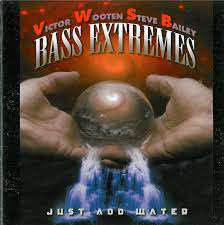 The Victor Wooten and Steve Bailey collaboration as the group Bass Extremes and their album “Just Add Water” [Shrapnel Records] is a conglomeration of the jazz, rock, and funk musical genres, generally a fun listening session. There is something for everyone on this recording, including such tracks as Mocha Soca, What Jamaican?, and Tropical Storm, but the track I kept coming back to was Music Of The Spheres. This track features Mr. Bailey playing the double bass and Mr. Wooten playing the cello. Those two instruments combined with some slightly eerie bell tones make for an interesting mix. The Fidelium did an excellent job of letting you hear the string detail of the bass and cello and the upper-frequency impact and decay of the bells (at least I think they are bells).
The Victor Wooten and Steve Bailey collaboration as the group Bass Extremes and their album “Just Add Water” [Shrapnel Records] is a conglomeration of the jazz, rock, and funk musical genres, generally a fun listening session. There is something for everyone on this recording, including such tracks as Mocha Soca, What Jamaican?, and Tropical Storm, but the track I kept coming back to was Music Of The Spheres. This track features Mr. Bailey playing the double bass and Mr. Wooten playing the cello. Those two instruments combined with some slightly eerie bell tones make for an interesting mix. The Fidelium did an excellent job of letting you hear the string detail of the bass and cello and the upper-frequency impact and decay of the bells (at least I think they are bells).
 The Fidelium does a great job with female vocals as well. A friend shared with me his appreciation for the Jacintha recording “Fire & Rain” [GROOVE NOTE]. Jacintha has such a lovely voice that I could listen to her for hours. From this work, I have been digging on Sweet Baby James. This track was recorded so beautifully. From the tonality of Jacintha’s voice to the stringed accompaniment that subtly comes in halfway through, the Fidelium does a good job of capturing all the subtleties of this track. Kicking up the energy a little bit was Joe Bonamassa’s, “Live From The Royal Albert Hall” [Premier Artists]. This recording was so much fun to listen to, one because it’s live, but also because of Mr. Bonamassa, whom until now, I had not listened to much of, is truly a virtuoso. Think of Stevie Ray Vaughn and B.B. King with some Clapton thrown in there, and that, in my opinion, is what I think of when listening to Mr. Bonamassa play. I found myself hooked on the dynamic drumming and Mr. Bonamassa’s guitar work on High Water Everywhere. The Fidelium has no problem allowing you to feel the energy and impact of the drums, and the sound of Mr. Bonamassa’s guitar pierces the air. The sound reverberates, making this recording that much more enjoyable. For all of you videophiles, I’ve heard that the DVD is even more enjoyable as you can watch as well as hear this fascinating concert.
The Fidelium does a great job with female vocals as well. A friend shared with me his appreciation for the Jacintha recording “Fire & Rain” [GROOVE NOTE]. Jacintha has such a lovely voice that I could listen to her for hours. From this work, I have been digging on Sweet Baby James. This track was recorded so beautifully. From the tonality of Jacintha’s voice to the stringed accompaniment that subtly comes in halfway through, the Fidelium does a good job of capturing all the subtleties of this track. Kicking up the energy a little bit was Joe Bonamassa’s, “Live From The Royal Albert Hall” [Premier Artists]. This recording was so much fun to listen to, one because it’s live, but also because of Mr. Bonamassa, whom until now, I had not listened to much of, is truly a virtuoso. Think of Stevie Ray Vaughn and B.B. King with some Clapton thrown in there, and that, in my opinion, is what I think of when listening to Mr. Bonamassa play. I found myself hooked on the dynamic drumming and Mr. Bonamassa’s guitar work on High Water Everywhere. The Fidelium has no problem allowing you to feel the energy and impact of the drums, and the sound of Mr. Bonamassa’s guitar pierces the air. The sound reverberates, making this recording that much more enjoyable. For all of you videophiles, I’ve heard that the DVD is even more enjoyable as you can watch as well as hear this fascinating concert.
A Few More Thoughts
The Fidelium is a great-sounding speaker cable that requires the patience of break-in. It does not give up hints into just how deep or powerful its bass performance will be but give it a few weeks, and I am almost sure you will be rewarded for your patience with it. What is unquestionable is the amount of detail retrieval, transient performance, and high-frequency extension the Fidelium can bring to your system. You do have to get used to using a cable like the Fidelium. As I said before, I just could not get used to being so handsy with it at first. I was so concerned with ripping and tearing it that I did not feel comfortable using it for the first week that I had it. It was not until Mr. Smith told me not to handle it like a piece of porcelain and not be afraid to turn, twist or manipulate it to get a good firm fit on my amp or speaker connectors. Once I got over that fear, making connections became quite easy. Mr. Smith has also developed a very nice set of jumpers that not only look good but sound good. I did not find that lifting the cables off the carpet using cable risers made that much of a difference, but I am sure some tweekers might find that to be helpful. Nor did I find letting one cable rest upon the other did anything to affect the performance.
For comparisons, I did not have a lot on hand to compare it to but did have some nice cables all the same. My Clarity Cable Organic is a very nice-sounding musical cable that I have had for a while. The Fidelium was just faster, more detailed, vibrant, and lively sounding. My even more expensive Klee Acoustics speaker cable did not fare as well I had hoped in its comparison to the Fidelium, and neither did my Sound Design Labs speaker cables. It’s almost as though Mr. Smith borrowed the DeLorean from “Back to The Future,” and came back to 2021 with a new cable that started running rings around all these cables I had on hand.
Conclusion
 The Fidelium is an exceptional speaker cable. At its relatively sane $995 price-point for a 6-foot pair ($795 for a 4-foot pair and $1395 for a 10-foot pair), the amount of performance it brings is a wonderful testament to Mr. Jeff Smith and Silversmith Audio. To go from the exorbitantly expensive Silversmith Audio Palladium to the much more realistically priced Fidelium and still offer you more performance for a fraction of the cost is quite an accomplishment. I know many us audiophiles lament the prices of some of these offerings, and rightfully so. But Silversmith Audio is doing its part in trying to “keep it real.” Kudos to Mr. Smith and Silversmith Audio for producing the Fidelium speaker cables. They are an outstanding accomplishment and deserving of the “Most Wanted Component” award they received for 2020. Highly recommended.
The Fidelium is an exceptional speaker cable. At its relatively sane $995 price-point for a 6-foot pair ($795 for a 4-foot pair and $1395 for a 10-foot pair), the amount of performance it brings is a wonderful testament to Mr. Jeff Smith and Silversmith Audio. To go from the exorbitantly expensive Silversmith Audio Palladium to the much more realistically priced Fidelium and still offer you more performance for a fraction of the cost is quite an accomplishment. I know many us audiophiles lament the prices of some of these offerings, and rightfully so. But Silversmith Audio is doing its part in trying to “keep it real.” Kudos to Mr. Smith and Silversmith Audio for producing the Fidelium speaker cables. They are an outstanding accomplishment and deserving of the “Most Wanted Component” award they received for 2020. Highly recommended.


mike wright
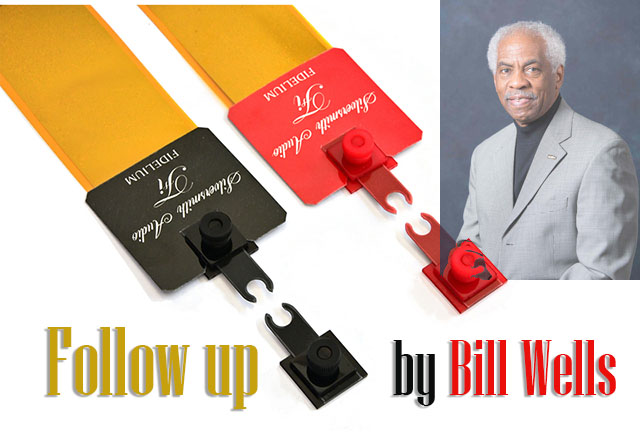
Personal Reflections
Quite frankly, there’s nothing like reconnecting with someone from your distant past, especially when it’s coming from a very positive place. In fact, trying to recall exactly when the last time we were in touch was has been challenging for both of us to remember. At this point, all I remember is an introduction that took place during CES in Las Vegas circa the early-to-mid 2000 timeframe. The occasion took place as I was visiting with Sean McCaughan, designer/manufacturer for the former and highly regarded ESP Concert Grand loudspeakers. Those were my reference speakers at that time, so I was most interested to check out the ESP exhibit and see if there was anything special happening, sound-wise.
As often happens during high-end audio shows, whether due to room conditions, power issues, or whatever, an exhibitor may not have such good fortune in getting really good sound right from the very beginning of the show. I distinctly recall that it was the second day of the show (i.e., Saturday), and the sound in this exhibit wasn’t quite where it should be. Again, having these speakers as my reference at the time helped me to be very familiar with their sound, so at this show, I had high hopes for hearing something familiar and even beyond. Frustration was definitely on the face of the exhibitor, and the issue seemed to have something to do with not having the correct speaker cables. The sound was good but not quite at the level hoped.
Back Story
 Enter Jeffrey Smith with a cache of his unique silver and palladium speaker cables. Appearing somewhat fragile and definitely unusual from anything I had seen in the way of speaker cables, I was most curious as to how this was going to play out. With a fairly quick replacement of the demo cables with the Palladium speaker cables, it was truly one of those “Holy Crap/You Gotta Be Kidding Me” type moments. In terms of the level of improvement with these cables in place, the system’s sound literally came to life, illuminated with sensational musicality. And the transformation actually covered the entire frequency spectrum with significant improvements in the bass, midrange, and upper frequencies. In fact, there was no apparent weakness that I could detect.
Enter Jeffrey Smith with a cache of his unique silver and palladium speaker cables. Appearing somewhat fragile and definitely unusual from anything I had seen in the way of speaker cables, I was most curious as to how this was going to play out. With a fairly quick replacement of the demo cables with the Palladium speaker cables, it was truly one of those “Holy Crap/You Gotta Be Kidding Me” type moments. In terms of the level of improvement with these cables in place, the system’s sound literally came to life, illuminated with sensational musicality. And the transformation actually covered the entire frequency spectrum with significant improvements in the bass, midrange, and upper frequencies. In fact, there was no apparent weakness that I could detect.
This was definitely a big boost for ESP, although it was a bit late for the show, and unfortunately, not nearly as many attendees were able to experience the wonderful sound for themselves as had been hoped.
For me, the story doesn’t end there. The good news is that I was fortunate in that later, I was able to secure a pair of both the Silver and Palladium speaker cables to audition in my home reference system. However, the bad news was this – even though I was able to secure a connection of the cables to my speakers/amps, due to some damage (i.e., shipping, other) – I wasn’t able to secure a proper enough connection and ultimately had to return the cables for repair. As things turned out, Jeffrey was actually in the process of modifying/updating these cables, and unfortunately, I wasn’t able to secure another pair for additional auditioning.
That Was Then and This Is Now
 Fast forward from those earlier days, and more recently, I was able to reconnect with Jeffrey and specifically to learn directly from him about his latest (and greatest) incarnation of his earlier unique ribbon type speaker cables. No longer using either silver or Palladium, his newer cables are referred to as Fidelium and what Jeffrey refers to as an evolutionary breakthrough. Here’s a description from the Silver Smith Audio website describing the basic design for these new cables: “a single, ultra-thin ribbon conductor per polarity; seamless from end-to-end and without traditional, sound-degrading soldered, welded or crimped connectors; and individually laminated in an extremely thin, yet rugged, polyimide film in order to achieve a geometry with a primarily air dielectric.” Additional reference on the website further describes these cables with having….” skin-effect characteristics of the newer state-of-the-art Fidelium alloy being 33 times superior to those of copper or silver.” Also, according to Smith, based on the ultra-thin design, the Fidelium speaker cable experiences less frequency-dependent attenuation and phase distortion than even copper or silver ribbon.
Fast forward from those earlier days, and more recently, I was able to reconnect with Jeffrey and specifically to learn directly from him about his latest (and greatest) incarnation of his earlier unique ribbon type speaker cables. No longer using either silver or Palladium, his newer cables are referred to as Fidelium and what Jeffrey refers to as an evolutionary breakthrough. Here’s a description from the Silver Smith Audio website describing the basic design for these new cables: “a single, ultra-thin ribbon conductor per polarity; seamless from end-to-end and without traditional, sound-degrading soldered, welded or crimped connectors; and individually laminated in an extremely thin, yet rugged, polyimide film in order to achieve a geometry with a primarily air dielectric.” Additional reference on the website further describes these cables with having….” skin-effect characteristics of the newer state-of-the-art Fidelium alloy being 33 times superior to those of copper or silver.” Also, according to Smith, based on the ultra-thin design, the Fidelium speaker cable experiences less frequency-dependent attenuation and phase distortion than even copper or silver ribbon.
So, after several phone conversations and several emails with Jeffrey Smith, just as he was in the process of relocating from the east coast to Lander, Wyoming. Mr. Smith advised me that he would send me a pair of B-stock cables that he had on hand if interested. The length of these cables was perfect, and shortly they were on their way to my home. Forgetting for a moment how thin these cables are, I kept my eyes peeled for either a Fed Ex or UPS delivery. Nope, neither! Instead, one day I received a relatively small box via Priority Mail from Smith, and yep, much to my surprise – inside was the pair of Fidelium speaker cables he promised to send.
Anxiously, I ever-so-gently removed the cables from the box. I then carefully unraveled them and laid them out on the floor, and marveled at their very attractive, highly reflective, bright orange-like/copper tone finish. I also immediately wondered how I was going to install them in my system, including appropriate positioning off the floor and providing a level of distance between the two layers of material. It sounds complicated and really wasn’t.
Just a significant difference from dealing with more conventional round, garden-hose-type speaker cables. The Silversmith Fidelium cables are anything but conventional in terms of their physical dimensions.
And the Sound Please
OK, moving on to the sound of my system with these cables installed – well, that’s relatively easy to describe and in a word, “Wow!” The pair I received had been used previously and did not require the same length of time for full burn-in as a brand-new pair. However, after initial installation and quick observation, even though I was somewhat impressed overall, I was also confident that even though what I heard immediately was quite positive, the full potential of these cables was yet to be heard. And as we know all too well in high-end audio, first impressions are not necessarily the best time to make a final judgment. In fact, particularly with cables (i.e., all types), there can easily be an initial sense of euphoria shortly followed by disappointment and even discouragement. Sometimes, sophisticated, complex products simply have a way of evolving and morphing over time into wonderful sounding devices from initial frustration.
 So, with this knowledge as well as tempering my enthusiasm, I simply fired up my system, with the Fidelium speaker cables in place, and put it into continuous streaming mode. With this approach, music signals were playing thru the cables for approximately 3 to 4 days. The resulting benefit of doing this was clearly obvious. Transformation is probably too strong of a word, so instead, I will say that the sonic character of the cables went from being good and very interesting to now being, without question, excellent in literally all aspects of music reproduction.
So, with this knowledge as well as tempering my enthusiasm, I simply fired up my system, with the Fidelium speaker cables in place, and put it into continuous streaming mode. With this approach, music signals were playing thru the cables for approximately 3 to 4 days. The resulting benefit of doing this was clearly obvious. Transformation is probably too strong of a word, so instead, I will say that the sonic character of the cables went from being good and very interesting to now being, without question, excellent in literally all aspects of music reproduction.
In fact, the sound was now punching all the boxes of superior sonic reproduction, including a noticeably accurate tonal balance (i.e., top to bottom), outstanding degree of open, airy, clear, see-through character, superb detail and resolution with musical nuances emerging freely in the sound field. Perhaps more shocking was the bass response.
During the initial installation, the bass was clear, distinct, and also light in overall character. Now the bass was full, dynamic, taut, quick (i.e., no overhang), and perhaps more articulate than I had experienced previously in my current system. In terms of speed, the Fidelium speaker cables exhibit a sense of quickness where the transient response seems right on the money. Through the midrange, no smearing with clear details that contribute to the authentic sound of whatever instrument or vocals being reproduced. Music and vocals emerge with their natural sonic character, including proper body and organic texture. High frequencies come through in a clear, open, extended, and airy sound field. Nothing is bright, etched, or closed in.
Hopefully, you get my message with this high-level overview, as well as understanding my appreciation and enthusiasm for this latest, innovative product by Silversmith Audio. One thing I purposefully left out was the issue around pricing. As I mentioned early on, the pricing for the then outstanding but somewhat limited production, Palladium speaker cables produced by this company was fairly high for those times. Not so with the Fidelium speaker cables. In fact, the pricing for these cables is shockingly low, with a pair of eight-footers costing just a little over a grand. Yes, that’s correct, the pricing makes these cables easily accessible, and the performance speaks for itself. Jeffrey Smith is to be commended for bringing such a fantastic, high-value product to the industry.


bill wells
Specifications:
Silversmith Audio Fidelium:
$795 4-Ft Pair
$995 6-Ft Pair
$1,195 8-Ft Pair
$1,395 10-Ft Pair
Address:
Silversmith Audio
Lander, WY
Website: www.silversmithaudio.com
Mike’s Associated Equipment:
Speakers
Tekton Design Moabs
Amplifier
VAC Signature 200 iQ Amplifiers (used as stereo and monoamps)
BSC Audio BSC100m 100-Watt Mono-amps
Gilbert Yeung Designs NSI-GY Integrated Amplifier
Preamplifier
VAC Renaissance Mk V with Phono
Analog
Merrill Heirloom Turntable
Rowland Research Consonance Tonearm
Transfiguration Phoenix Cartridge
Digital
Asus Laptop w/Fidelizer Pro, Roon/Tidal/Qobuz, and JRiver v.26 for Hi Res Files
Blue Circle Audio BC510CR NOS DAC
Marantz SA-7S1 CD Player
Cables
Bricasti XLR Interconnect
Dynamic Design PAAPI
Shunyata Anaconda Interconnect
Silversmith Fidelium Speaker Cable
Clarity Cable USB Digital Cable
Anna Lyric USB Digital Cable
Essential Sound Product Essence II Power Cords
Power Line Conditioner
Essential Sound Products Essence Power Distributor
Inakustik 3500P
Accessories
Star Sound Sistrum Rhythm Two Platform Stand
Symposium Acoustics Super Plus Speaker Platforms
Symposium Acoustics Ultra Platform
Symposium Acoustics HDSE Rollerblocks
Symposium Acoustics +2 Rollerblocks
Epiphany Stand Systems – Celeste Reference Stand
Stereo Times Masthead
Publisher/Founder
Clement Perry
Editor
Dave Thomas
Senior Editors
Frank Alles, Mike Girardi, John Hoffman, Russell Lichter, Terry London, Moreno Mitchell, Paul Szabady, Bill Wells, Mike Wright, Stephen Yan, and Rob Dockery
Current Contributors
David Abramson, Tim Barrall, Dave Allison, Ron Cook, Lewis Dardick, Dan Secula, Don Shaulis, Greg Simmons, Eric Teh, Greg Voth, Richard Willie, Ed Van Winkle, and Rob Dockery
Music Reviewers:
Carlos Sanchez, John Jonczyk, John Sprung and Russell Lichter
Site Management Clement Perry
Ad Designer: Martin Perry


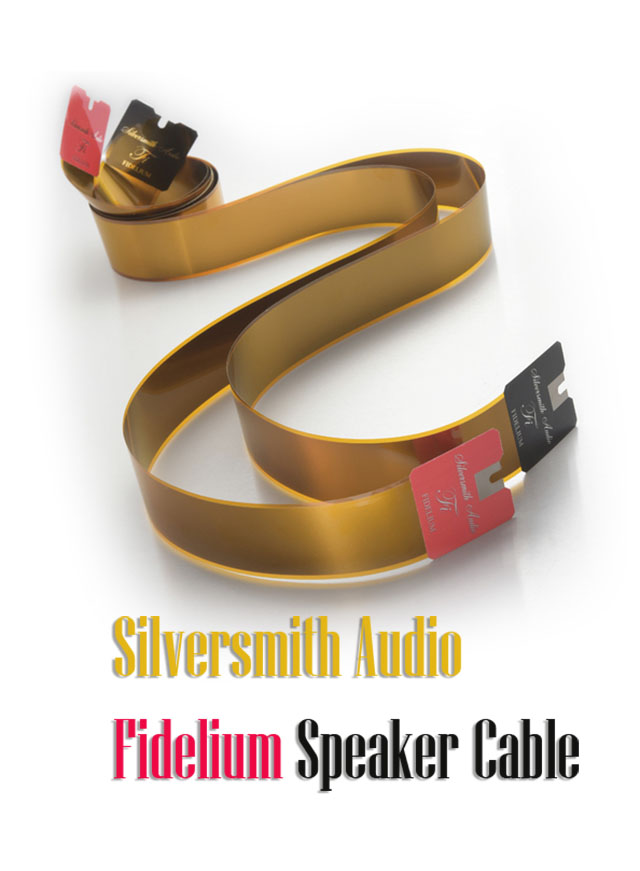




Be the first to comment on: Silversmith Audio Fidelium Speaker Cable by Mike Wright